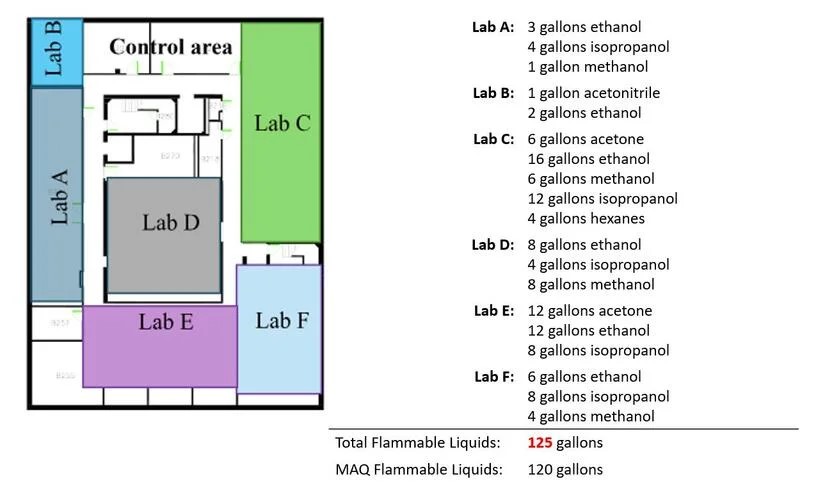Safety and Loss Prevention
Quantities of Hazardous Materials
Each chemical (hazardous material) has unique physical and health hazards. Some chemicals have multiple hazards. For example, acetic acid is both flammable and corrosive.
Maximum allowable quantities (MAQs) are determined as an aggregate quantity of a hazardous materials per hazard class and physical state in a single control area. Each control area has separate MAQ limits, based upon building features such as floor level and automatic fire sprinkler coverage.
Here is an example of how MAQs are determined within a control area. If the floor of this building is a single control area, then each of the labs’ chemical quantities will be combined in aggregate to determine the MAQ for each hazard category.

In this example, the aggregate quantity of flammable liquids exceeds the MAQ and is not in compliance.
